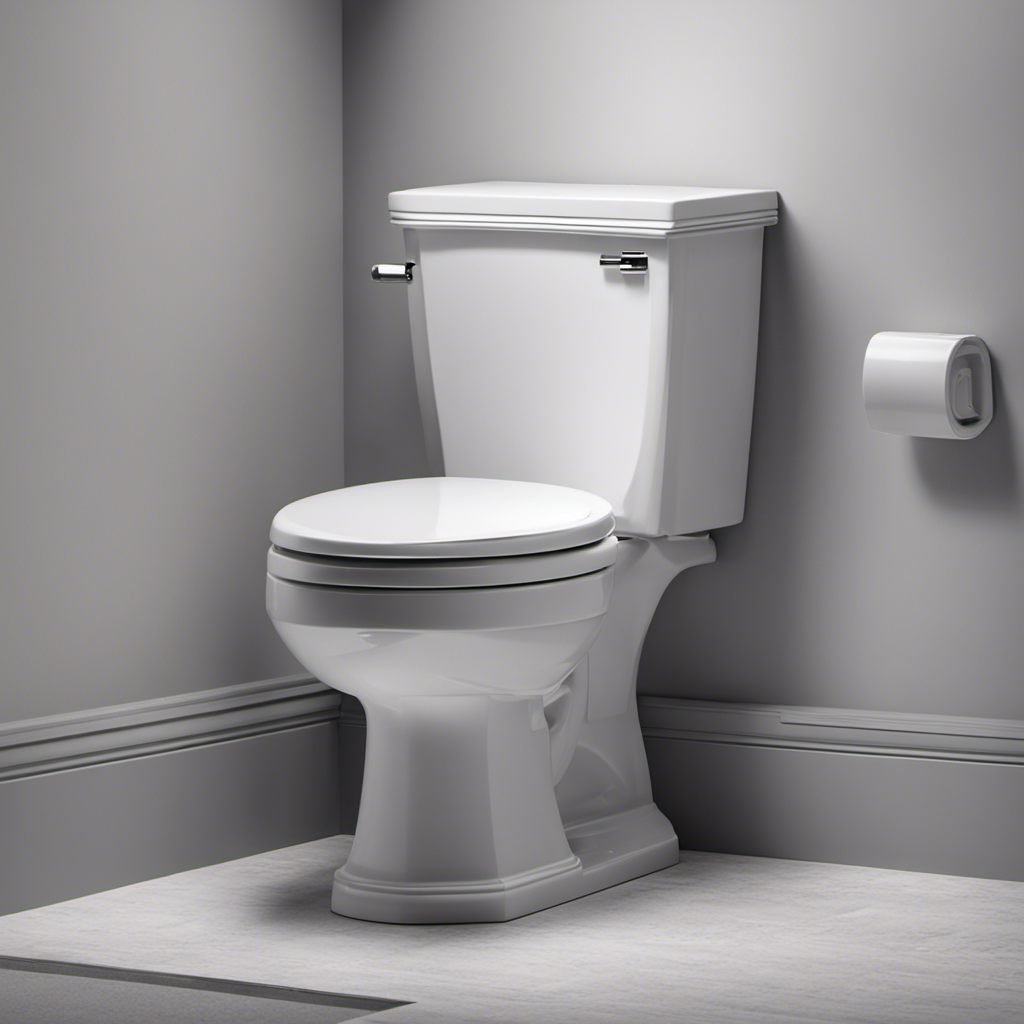Did you know that over 61 million adults in the United States have a disability? That’s why it’s important to have accessible facilities, like ADA height toilets.
In this article, I will provide you with all the information you need to understand what an ADA height toilet is and why it’s beneficial. We’ll explore the ADA height requirements, the features of these toilets, and how to choose the right one for your needs. Plus, I’ll share some tips on installing an ADA height toilet.
Let’s dive in!
Key Takeaways
- ADA height toilets provide increased accessibility for individuals with mobility issues.
- They reduce the risk of falls and injuries.
- ADA height toilets are designed to provide comfort for people with knee or hip problems.
- It is important to consider personal preferences and needs when choosing the right ADA height toilet.
Benefits of ADA Height Toilets
One of the benefits of ADA height toilets is that they provide increased accessibility for individuals with mobility issues. ADA height toilets are designed to be higher than standard toilets, making it easier for people with mobility challenges to sit down and stand up. This extra height eliminates the need for excessive bending or straining, reducing the risk of falls and injuries.
The advantages of ADA height toilets also extend to people with knee or hip problems, as they can comfortably use the toilet without putting strain on their joints.
However, there are a few disadvantages to consider. ADA height toilets may not be suitable for shorter individuals or children, as the increased height can make it difficult for them to use the toilet comfortably. Additionally, the higher seating position may require some people to adjust their bathroom habits and techniques.
Overall, the benefits of ADA height toilets outweigh the disadvantages, as they significantly improve accessibility for individuals with mobility issues.
Understanding ADA Height Requirements
To understand the requirements set by the Americans with Disabilities Act (ADA) for toilet height, you should know that it is important to ensure proper accessibility for individuals with disabilities.
ADA compliance is crucial in creating an accessible bathroom design that accommodates people with varying mobility needs.
According to ADA guidelines, the toilet seat height should be between 17 and 19 inches from the floor. This range allows individuals with disabilities to transfer easily from their mobility devices to the toilet seat.
It is essential to adhere to these height requirements to promote independence and safety for people with disabilities.
Features of ADA Height Toilets
When choosing a toilet for accessibility, you’ll want to look for features like a higher seat and grab bars to ensure ease of use for individuals with disabilities. ADA height toilets are specifically designed to provide comfort and accessibility for people with disabilities.
Here are three key features of ADA height toilets:
-
Higher seat: ADA height toilets have a seat height ranging from 17 to 19 inches, which is higher than standard toilets. This makes it easier for individuals with mobility issues to sit down and stand up without straining their joints.
-
Grab bars: ADA height toilets come with grab bars installed on the sides. These bars provide additional support and stability for individuals with limited mobility, allowing them to maintain balance while using the toilet.
-
Comfortable design: ADA height toilets often feature a larger bowl and a wider seat than regular toilets. This provides more space and comfort for individuals with disabilities, ensuring a better overall experience.
Now that you understand the features of ADA height toilets, let’s explore how to choose the right one for your needs.
How to Choose the Right ADA Height Toilet
If you’re considering an ADA height toilet, there are a few factors you should take into account when choosing the right one for your needs.
First, consider the toilet seat options. ADA height toilets typically come with a standard seat, but you may want to consider upgrading to a soft-close seat or a seat with added features like a bidet.
Next, think about maintenance tips. Look for a toilet with an easy-to-clean surface to help reduce the time and effort required for cleaning. Additionally, consider a toilet with a powerful flush system to prevent clogs and minimize the need for frequent maintenance.
Installing an ADA Height Toilet
Once you’ve chosen the right ADA height toilet, installation can be done by following a few simple steps. Here are some common mistakes to avoid and troubleshooting tips to ensure a smooth installation process:
-
Measure and prepare the space: Before installation, measure the rough-in distance to ensure the toilet will fit properly. Clear any obstructions or debris from the area.
-
Secure the toilet bowl: Place a wax ring on the flange and carefully lower the toilet bowl onto it. Ensure a tight seal by evenly tightening the bolts on the base.
-
Connect the tank: Attach the tank to the bowl using the included bolts and gaskets. Make sure all connections are secure and leak-free.
Remember to double-check all connections and follow the manufacturer’s instructions for your specific ADA height toilet. If you encounter any issues, such as leaks or unstable seating, refer to the troubleshooting section of the installation manual or seek professional assistance.
Frequently Asked Questions
What Are the Dimensions of an ADA Height Toilet?
The dimensions of an ADA height toilet vary, but it is typically around 17-19 inches in height. The installation process involves ensuring proper clearance and accessibility for individuals with disabilities.
Can I Install an ADA Height Toilet in My Home if I Don’t Have Any Disabled Individuals Living With Me?
Sure, I can install an ADA height toilet in my home even without disabled individuals. It offers benefits like comfort and ease of use. The installation process is straightforward and requires following ADA guidelines.
Are ADA Height Toilets More Expensive Than Standard Height Toilets?
Yes, ada height toilets are generally more expensive than standard height toilets. However, the benefits of using ada height toilets in commercial spaces, such as improved accessibility and compliance with regulations, outweigh the higher cost.
Are There Any Specific Building Codes or Regulations That Require ADA Height Toilets?
There are specific building code requirements that mandate the installation of ADA height toilets in certain public buildings. These toilets offer benefits such as improved accessibility and comfort for individuals with mobility difficulties.
Can an ADA Height Toilet Be Easily Converted Back to a Standard Height Toilet if Needed?
Yes, an ADA height toilet can be easily converted back to a standard height toilet if needed. However, it may involve additional costs for reinstallation and adjusting the plumbing. It is important to compare the cost of ADA height vs standard height toilets before making a decision.
Conclusion
In conclusion, choosing an ADA height toilet can greatly improve comfort and accessibility in your bathroom.
With its higher seat and ergonomic design, it provides a more convenient and user-friendly experience, especially for individuals with mobility issues or disabilities.
According to a recent study, over 20% of Americans struggle with some form of mobility impairment, making ADA height toilets a crucial addition to any accessible bathroom.
Just like a sturdy handrail on a steep staircase, an ADA height toilet offers stability and support, ensuring a safe and enjoyable bathroom experience for everyone.










